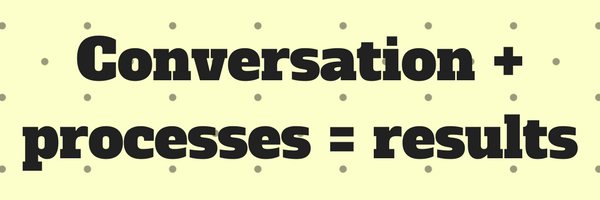What happens after you implement new business processes?
Does it yield the benefits straightaway, or is it a struggle to embed the new way of working?
For many businesses a new process does not equate to the desired results. It is a perennial problem for most of us. This article shares some ideas on how we can avoid this problem.
The first port of call is to do with relevance. If the people who are meant to use the process don’t recognise that it is for them, and that it will help them with their work, then making the change is difficult. To get over this first hurdle we need to ensure that they have been trained to use the process, ideally against a work instruction or standard operating procedure. If you have a skills matrix in the business then this is a simple approach to ensuring that the training is effective. During this training there needs to be a correlation with how to perform the process and why it is beneficial. If there is no perceived link then adoption is difficult, so make sure the link is obvious.
Once training has been undertaken there are a whole raft of options available to us to help with the usage and embedding of the new processes. One of my favourite is holding workshops. Nothing fancy, just getting a team together to review the current processes. This can be done around a table reviewing the written procedures, physically walking the process, or a combination of the two. You can analyse the process anyway you want to, but a simple conversation is a good place to start if you don’t have a preferred analysis method. Gaining different perspectives is invaluable to understanding what people think about the processes as well as finding out how it gets used in practise. Not only do you get feedback about the process, you get an additional opportunity to train people which can be great as a refresher for most.
Auditing is another brilliant way to find out how well people have bought into the processes. Simply put, if you know what you should be doing (the standard) and can observe what is really happening (the evidence) you can quickly define a gap that needs to be filled. This approach is at the heart of most formal quality management systems, but can be applied to anything within a business. From the gap you then have the opportunity to engage in conversation about the process, its relevance and how we conquer the gap. Again, it is an opportunity for learning, educating and gathering feedback.
So, let’s now imagine that we have a new member of the team starting. How effective is our induction? Do we overload them in the first day, or week, and hope that they will understand how to become an effective member of the team and adopt our business processes? In many businesses this is not what happens. We recognise that it is difficult to marry the pace of working life with the rate at which new starters can get to grips with the business’ processes. Buddying is a simple strategy to help you get around this. Pair new people to existing staff members who know the process, follow it and display the right kinds of behaviours around it. A little bit of formality around this area makes for an effective post-induction training approach for new starters.
A real tell tale of the business adopting the processes, where the individuals have decided that they are relevant, is from the chatter you get in the business. If we take the basic idea of culture being ‘it’s what we do round here’ then if you have people talking about the processes, executing the processes and developing the processes you will know that you have cracked it. If, however, you are not having these kinds of conversations yet then I propose two routes forward.
Firstly, revisit the training and the workshops to see if there are any educational gaps that need to be closed.
Secondly, review the agendas of any standard meetings that your business runs and weave your processes into those agendas. Make it clear that these processes are interlinked by referencing them as appropriate, but make sure people understand that these processes are core to the business.
Doing any, or all, of the above will help your staff to see that your business processes are relevant to them. Making their relevance clear is a major step towards having adopted and embedded processes, the kinds of processes that actually deliver on their promises. But, if you boil this all back to its simplest form we can summarise these approaches as:
Structured ongoing conversations + new processes = different results
Properly embedding a process makes a huge difference to its results, hopefully for the better! It isn’t always straightforward and it isn’t always easy. With persistence, however, the results can be achieved.
